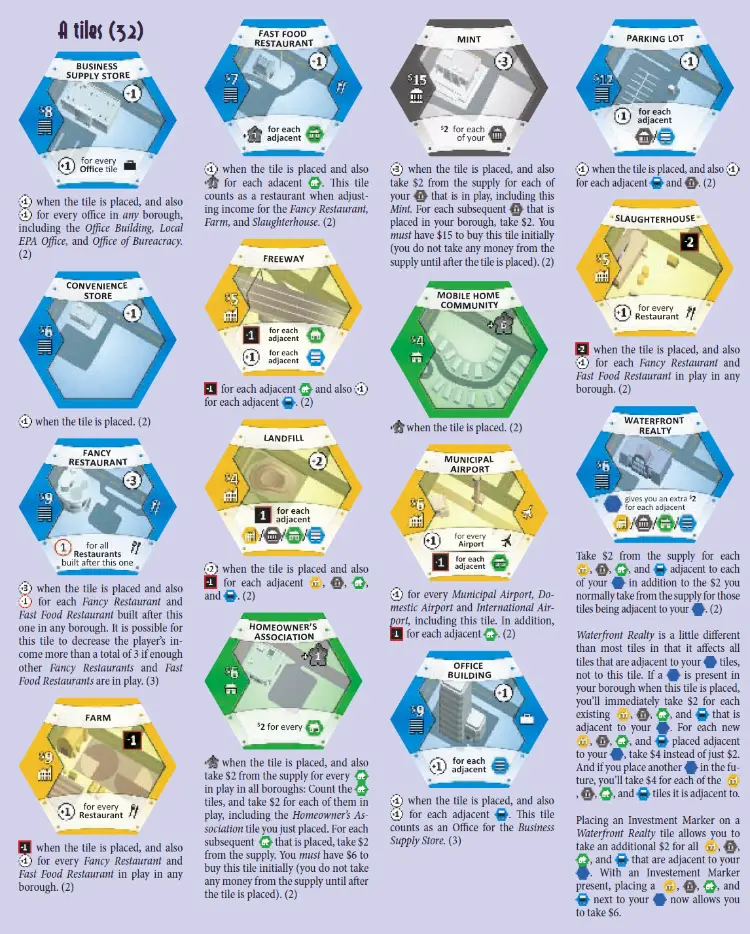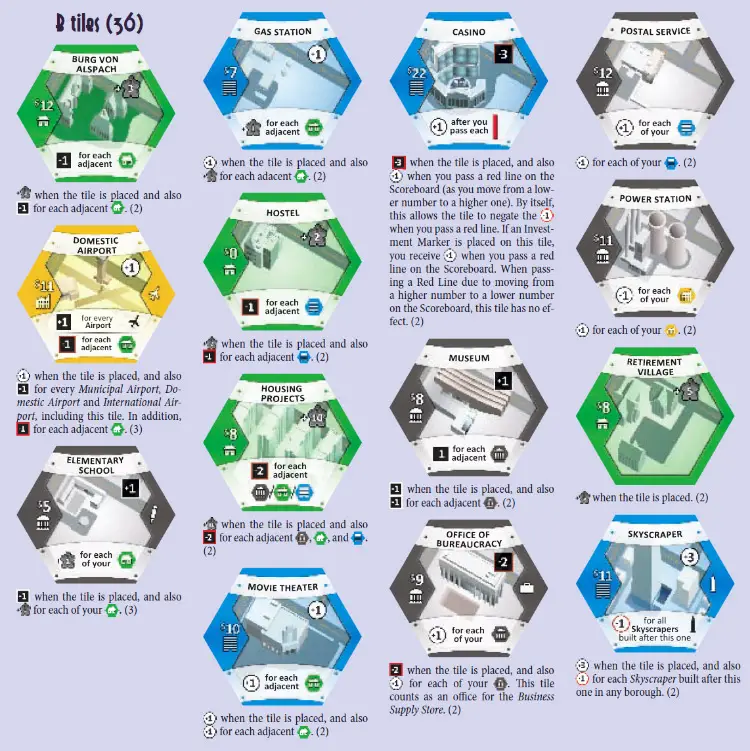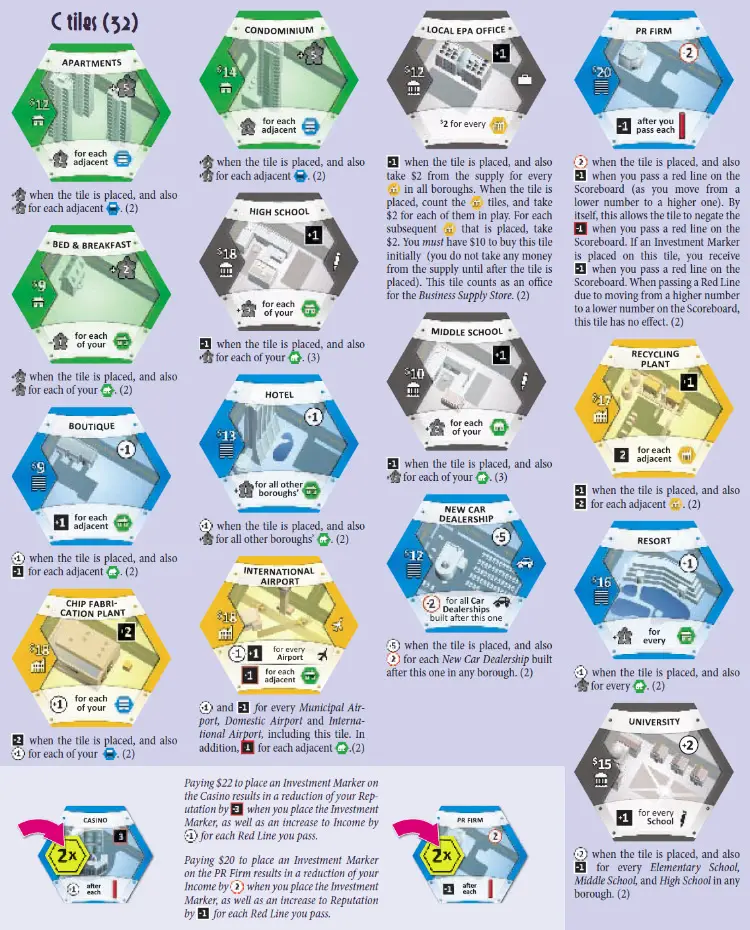
Each tile that you place impacts your city in some way. Tiles fall into one of four categories:
Residential  , Industrial
, Industrial  , Commercial
, Commercial  and Civic
and Civic  .
.
Most tiles give bonuses or penalties to Income  , Reputation
, Reputation  or Population
or Population  , while others give you special abilities.
, while others give you special abilities.
Each tile has four or five main elements, as shown in the example below:

Tiles must always be placed so that at least one edge is adjacent to another tile (face up or face down). Tiles can be placed so that they go around (but not rest on top of) the Borough Board.
Interactive Icon Tiles
Some tiles are impacted by tiles with a specific icon on the right corner of those tiles. These are interactive icon tiles. For instance, the Business Supply Store 
income increases by  for every tile with an office icon (a little briefcase) on it, including the Office Building
for every tile with an office icon (a little briefcase) on it, including the Office Building  , Office of Bureaucracy
, Office of Bureaucracy
 , and the Local EPA Office
, and the Local EPA Office  .
.
Tile Effect Resolution Order
To resolve the effects of tiles when they're played, always use the following order:
Pay the cost of the tile shown on the left corner of the tile (and any additional cost shown on the Real Estate Market).
Adjust according to the immediate effect in the upper right of the tile.
Adjust according to the conditional effect at the bottom of the tile.
Adjust according to the conditional effects of any adjacent tiles.
Adjust according to the conditional effects of any non-adjacent tiles.
Check with other players to see if any of their tiles will cause you to make adjustments.
Check with other players to see if their boroughs are impacted by the tile you've played.
Tile effects can stack, and players may have more than one of the same named tile. For instance, it is okay to have two Fast Food Restaurants in a single borough.



Continue Reading

